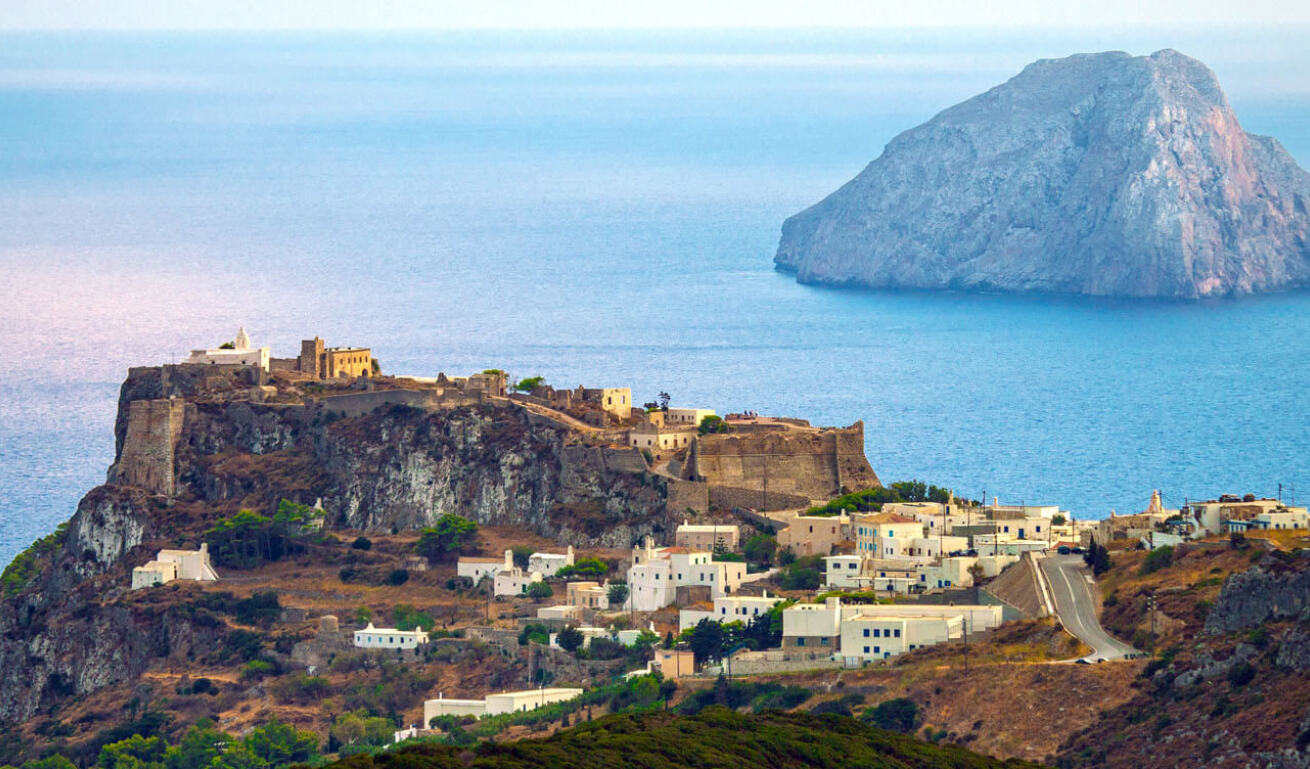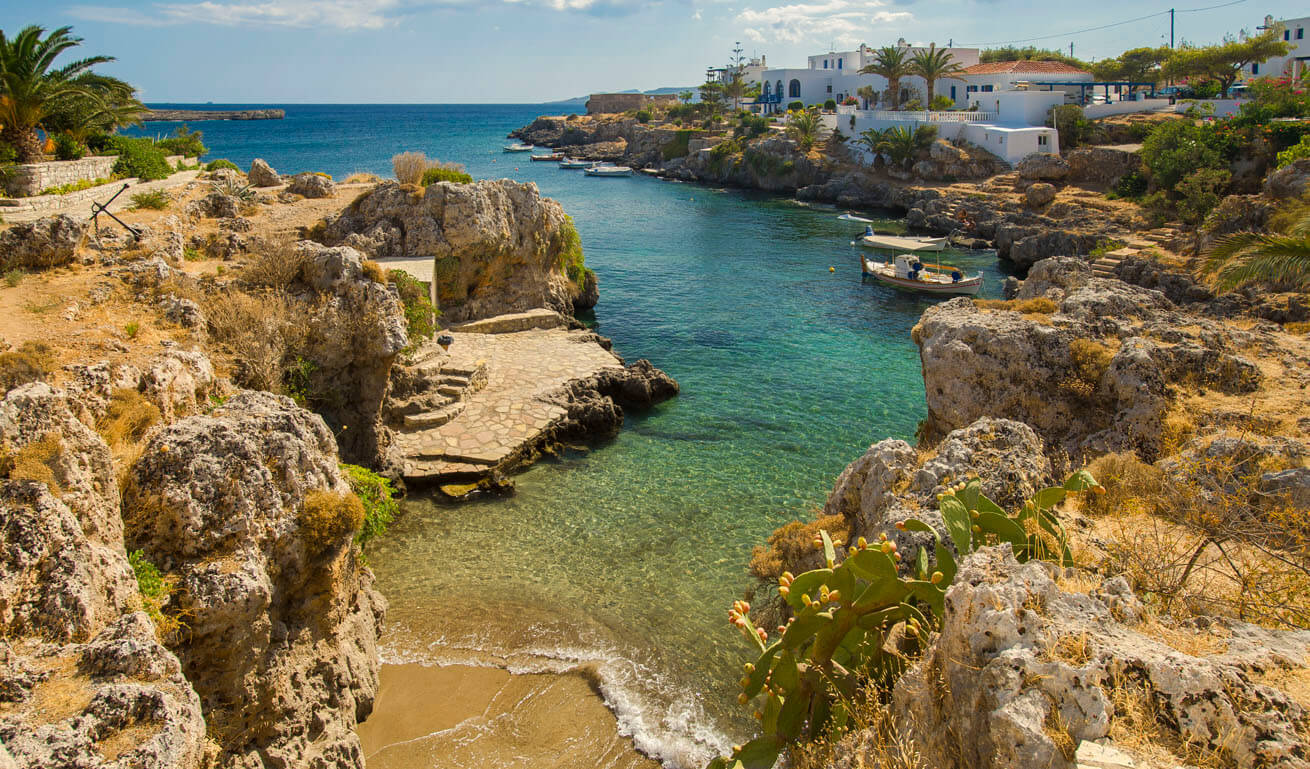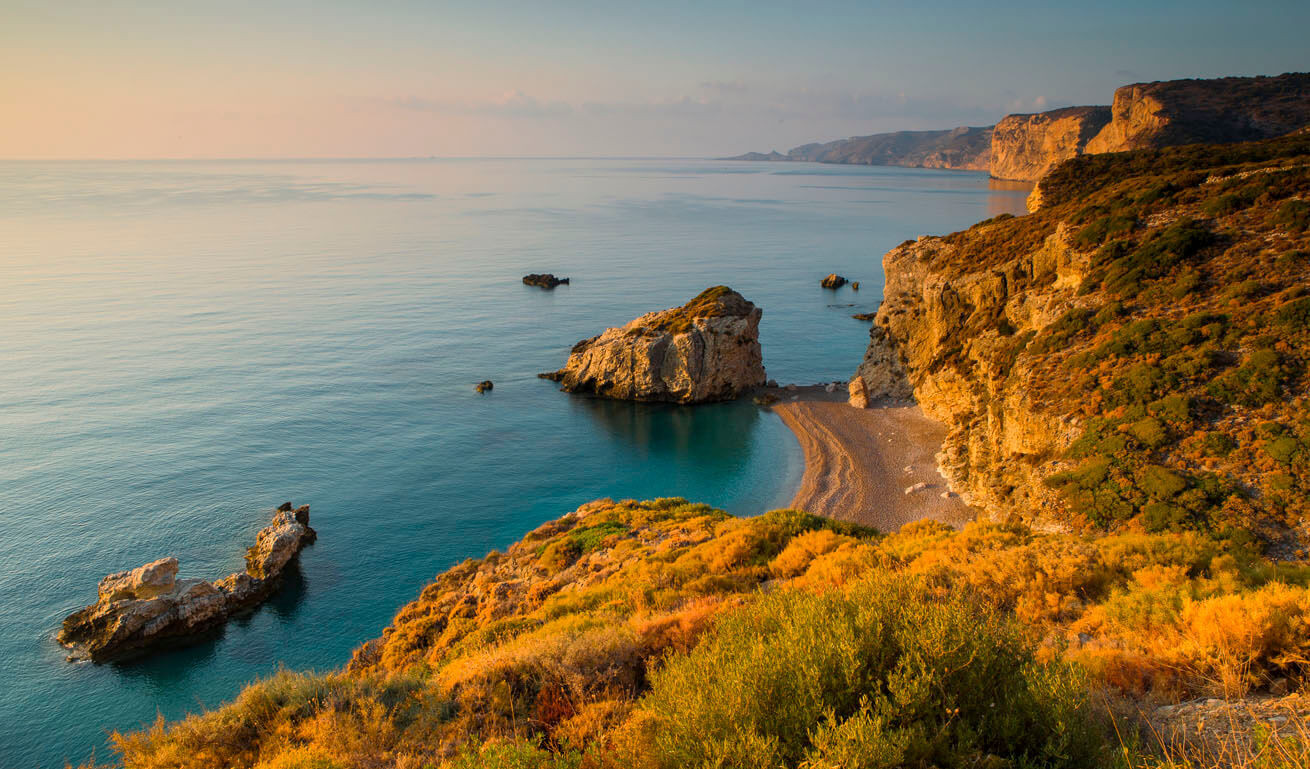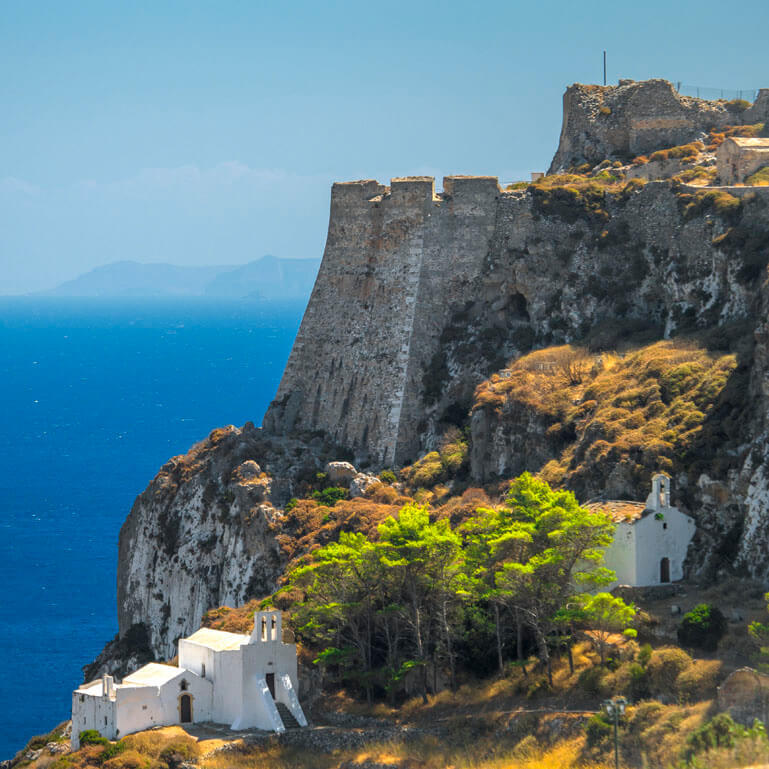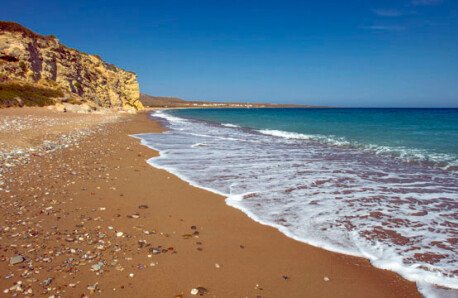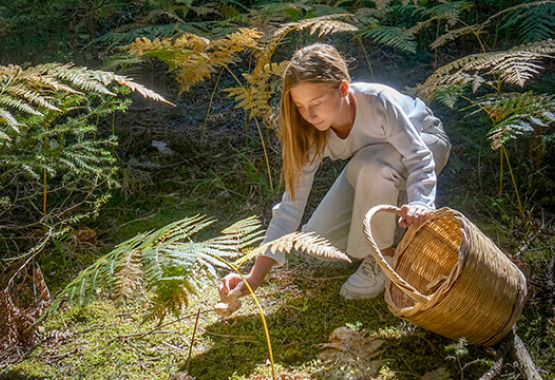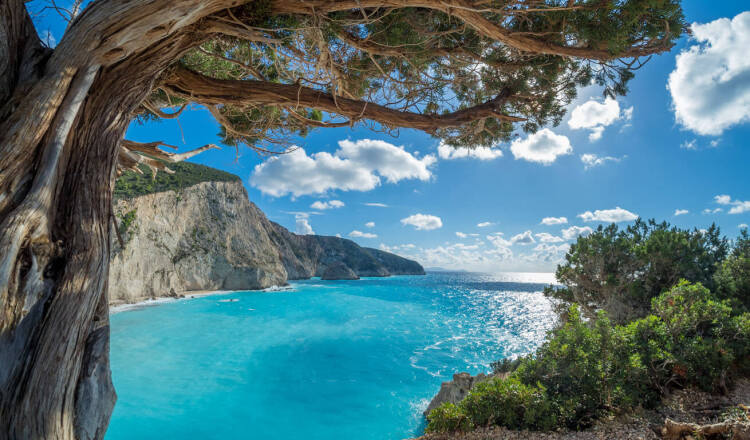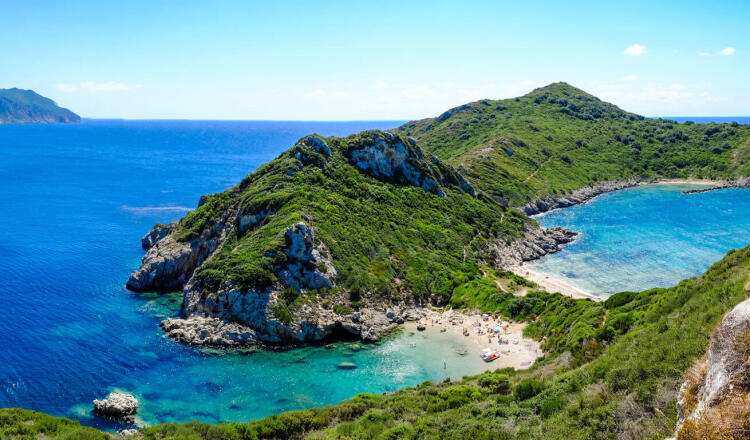Kythera or Cerigo (the island’s Venetian name) is the southernmost member of the Ionian Islands and it is located at the entrance of the Laconian Gulf. The island style of architecture is to be found in all villages which were mostly built in a traditional style, such as the Byzantine churches and the Venetian Castle dominating the hill above Chora (main town).
Most of the island festivals and celebrations take place during the summer. Join them and you will get a personal view of Kythera’s local traditions, that remain very much alive today.
Make a note of visiting the Wine Festival at Mitata village, and the religious festivals in honour of Panagia [Our Lady] Myrtidiotissa (September 24th) and Agia Elesa [St. Elesa] Festival (August 1st) etc.
Explore the island
Start from Platia Ammos, the northernmost seaside village with quaint little houses and fish tavernas. A ravine with many freshwater springs and brooks starts from Gerakari area and goes all the way to this seashore. It’s a quiet place where you can have a relaxing holiday. The dirt road that starts here will take you to cape Spathi; this is where you will see the 1857 Moudari Lighthouse, one of the biggest in the Greek Seas, rising to a height of 25 metres. To reach it, you must follow the path. When the lighthouse keeper is there, you may be allowed to see the interior. Weather permitting, this incredibly beautiful location will offer you a fine view of the entire Laconian Gulf, from Cape Maleas all the way to Cape Tainaro.
From Platia Ammos head towards Karavas (3km SW). You will enjoy your hiking trip through the green gorge with the tall plane trees, and the babbling brooks. Make a point of visiting the Amir Ali springs neighbouring area.
On the northeastern part of Kythera, Agia Pelagia village boasts a beautiful beach, many tavernas and tourist accommodation establishments, as well as the island’s oldest harbour. Enjoy the beauty of nature as you hike along Kakia Lagada gorge, which ends here.
A beautiful hiking route, through fragrant pine trees, will lead you to Potamos, Kythera’s largest village. Its traditional houses, the Venetian Guardhouse and the neo-classical Kindergarten building are very interesting from an architectural point of view. You will find traditional coffee houses, bakeries, and tavernas serving delicious local dishes. Your accommodation options, too, are plenty. If you visit the village on a Sunday, you will see the open-air market, which takes place on the slab-paved main square. Taste and buy local traditional products. On August 15th [a major Greek religious feast day] a large festival takes place on the village square with lots of good food, dancing, and local wine.
Head south and you will reach Aroniadika, a traditional village with little white-coloured houses with arches and verandas adorned with bougainvillea. The architecture brings to mind the style you usually find in the Cyclades. This is where you will find top quality honey from local producers.
From Potamos village, follow the signposts for 8 km towards historic Palaiochora town, now in ruins. You will find the view fascinating. Once, this place used to be the Byzantine capital of Kythera, built on a hill and protected by crags, at a short distance from the shore and unseen from the sea. The town was levelled in 1537 by Barbarossa, a much-feared pirate that roamed the Mediterranean in those times. The remains of houses and churches stand in proof of the town’s great past.
Next, follow the main road towards the south. You will reach Chora, the island’s picture-perfect capital and administrative centre. Stroll along the alleys past the stately homes of old aristocratic families. The streets are very narrow, linked with arches, the houses are built right next to each other, following the unadorned island architectural style. The Venetian influence is everywhere. Make sure you visit the Archaeological Museum, in the outskirts.
Drive towards nearby busy Kapsali village and enjoy your coffee or your ouzo drink by the harbour any time of the day. The view of Chora and its medieval castle dominating the sea is nothing short of breathtaking. Stay in Kapsali for the evening, as this is the island’s nightlife hotspot.
Make a note of visiting Kythera’s castles:
- Chora’s castle dominates the town. Its construction has begun during the late Byzantine Period, and it was completed when the Venetians took over the island. It has served as the seat of the Venetian Governor on Kythera. In the interior, you will see byzantine churches and other buildings still standing, as well as the residence of the Venetian Governor and, later on, of the British Commissioner. Today, it houses the Kythera Historical Archives with plenty of records dating back to the Venetian occupation.
- The Castle on Kato Chora Mylopotamou. Inside it, you will see the main neighbourhood with many houses which remain in good condition, as well as remarkable byzantine and late-byzantine churches with amazing mural paintings and icons. At the Fort’s entrance, you will see the coat of arms depicting the Lion of St. Mark – the emblem of the Republic of Venice.
- The Avlemona Castle was built at the natural harbour’s mouth by the Venetians in order to protect it from raids.
Those of you interested in visiting caves will enjoy touring the cave of Agia Sofia Mylopotamou: it is 100 m. long, covering an area of 2000 square metres, and there are chambers with beautiful stalactites and stalagmites. At the cave entrance you will enter the small chapel of Agia Sofia: the religious paintings on the icon screen date back to the 18th c. The 13th c. murals are signed by Theodoros, a Byzantine painter. You can also visit Chousti Cave in Diakofti.
Here’s some more interesting sights for you to visit:
- Milapidea School
This building used to be a typical educational establishment constructed by the British when the island was under their rule. It is located on high ground, between Fatsadika and Livadi villages.
- The windmills and watermills on the island
The 19th c. windmills on the island were stone-built and they were essential to the local agricultural activities. You will see them standing – either in singles or in twos - on the outskirts of villages, in locations easily accessible from cultivated plots of land. During the 20th c., wheat grinding in windmills was gradually abandoned and by 1955 all windmills on the island were closed down. You can also see the 23 watermills still standing, but only three of them remain in a fairly good condition. Most of them are located in the valley near Mylopotamos village.
- The ancient harbour of Skandeia
Visit the archaeological site and the ancient tombs.
- Katouni Bridge
It was built in 1826, under British rule. It is 110 m. long, 6m. wide and the maximum height is 15 m. It is supported by 13 arches and 12 cylindrical openings arranged in perfect symmetry.
Savour delicious traditional products:
- Try the local thyme honey, you will be impressed by its flavour, aroma and colour.
- Sip a shot of fatourada, the local flavourful liqueur, made from pure tsipouro spirit, cinnamon & cloves, or flavoured with fruit such as tangerine, orange and apricot, following a long period of fruit skin and kernel processing (sun-matured fatourada)
- Taste Rozedes: this traditional sweet is made with thyme honey, almonds, semolina, sugar, cinnamon & cloves. It can be preserved for many months in excellent condition.
- Pastitseta is a sweet with a Venetian origin: it is made with vanilla, fresh butter and quince jam.
- Xerotigana is made with thin layers of dough arranged in a shape that resembles a water lily. The thin crunchy filo sheet is fried and dressed with thyme honey, sesame seeds, and cinnamon.
- Pasta mylou is the ideal sweet for you if you love almonds; to make it, almonds are blanched and ground in a hand mill, to form a paste that is mixed with vanilla extract and a syrup to bind the ingredients.
- Koumara is a bite-sized sweet that is made from strawberry tree fruit.
- Boutino is a type of sponge cake that is made with fresh milk, top quality butter, free range eggs, semolina, sugar, currants, slightly browned almonds and ground cinnamon. Try it topped with ice cream.
- Melounia is a small sized honeyed sweet, made from quality local products: thyme honey, almonds, flour and extra virgin olive oil.
The wine lovers among you will find some very interesting labels in Kythera. You can try white, rosé or red wines produced from local grape varieties, such as arikanas (yields a rosé wine), roditis, petrolanos, kydonitsa (they yield white wines) and toukoumaki (yields a red wine). You will of course find top quality wines produced from blending local varieties with imported ones.
Before you leave Kythera, make sure you buy a bouquet of dried sempreviva flowers: this is a beautiful small endemic flower that grows only in the south parts of the island on steep rocks and on Chytra Islet, opposite Diakofti. It was so named by the Venetians who saw that these flowers remain intact (sempre viva: always alive) and do not wither for a long period of time. It’ll be a great memento of your trip here.


